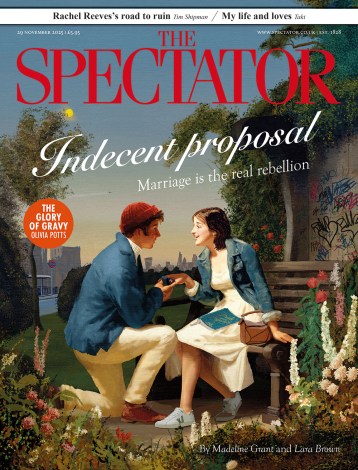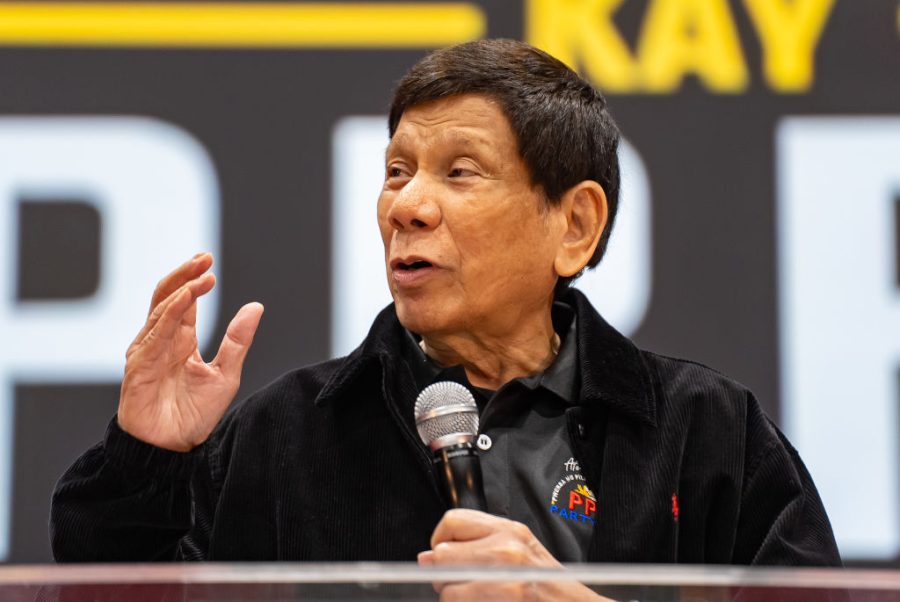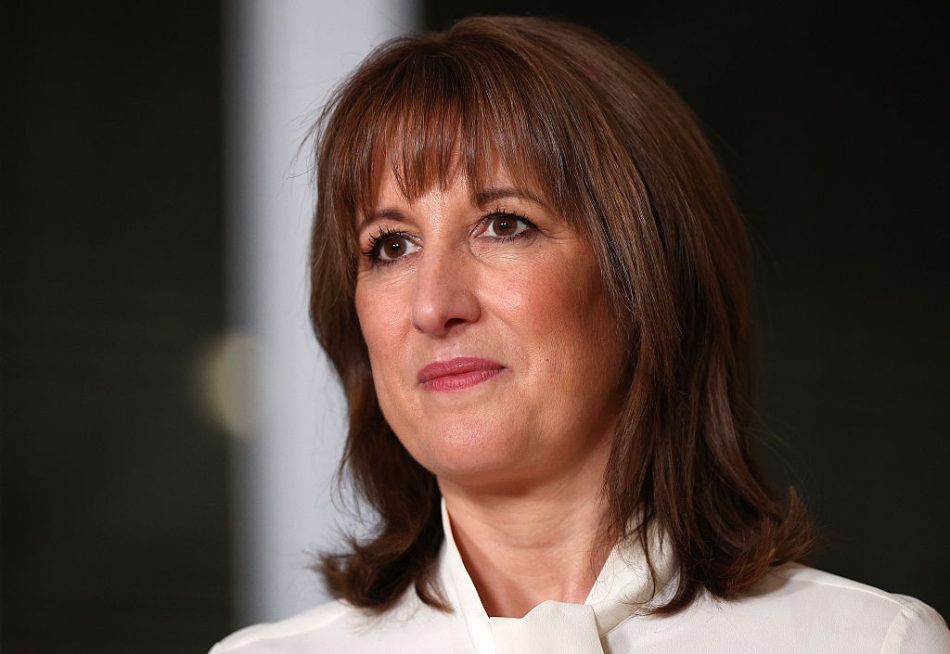I saw my first murder scene in Manila. On the evening of the 22 January 2018, a pair of assassins on motorbikes rode up to the scrap metal dealer Manny ‘Buddy’ Wagan and blasted him twice in the head. I didn’t witness the killing itself but arrived with my fixer just in time to see a passerby lighting a candle in honour of the deceased, the flickering flame reflected in the pool of blood, brain and skull spread across the pavement.
Manny’s death was one of up to 30,000 such slayings over the course of President Rodrigo Duterte’s six-year rule of the Philippines between 2016 and 2022. Duterte had declared a war against drugs by pledging to eliminate every last pusher and addict. ‘If someone’s child is an addict, kill them yourselves,’ he said in one speech, ‘so it won’t be so painful to their parents.’
The war on drugs fought by Duterte closely follows the stages of a genocide
It’s not clear from the public record whether Manny’s name was on a police kill list of drug suspects, but his execution fit the pattern. There was even a term for this sort of drive-by by murderous motorcyclists: ‘riding in tandem’.
Duterte was arrested in Manila on Tuesday on a warrant issued by the International Criminal Court for crimes against humanity, and has now been flown to the Hague.
Father Flavie Villanueva, a Catholic priest who helps the families of victims of extrajudicial killings (EJKs, as they’re known here), read a poem to me addresse to Duterte that was written by a member of his flock. ‘You’re lucky your father was read his Miranda rights, while ours were read their funeral rites,’ he said. ‘Your father had a jet plane, we had a hearse.’
One of Duterte’s colourful quotes is slo telling. ‘Hitler massacred three million [sic] Jews,’ he declared in 2016. ‘Now there are three million drug addicts. I’d be happy to slaughter them.’
Both the president and his spokesman soon walked back his comments as a clumsy analogy and apologised, but the parallels between the Filipino Terminator and a certain moustached megalomaniac are quite strong. As I argued in my book Dopeworld, the war on drugs fought by Duterte closely follows the stages of a genocide as outlined by Holocaust scholar Raul Hilberg.
First is identification, in which a portion of humanity is identified as the scourge of society. For Duterte, this was the consumers and purveyors of illicit substances (specifically crystal meth, or shabu), who he claimed had shrunken brains and accused of raping babies. However, most Filipinos who took meth were not mentally-incapacitated child molesters but rather blue-collar workers such as builders or truckers who used it to stay awake during long shifts.
Of course, druggies are not an ethno-religious group, but the question of whether genocide should only apply to this category of victims is an academic and legalistic one: Argentina’s dirty war, which saw the ruling military junta enforce state terrorism between the 1970s and 80s, and the Khmer Rouge’s reign in Cambodia in the 1970s are often described as genocides; in both cases the ruling regime was largely slaughtering its own people. The original definition of genocide included social and political groups, but this was left out of the UN’s final definition in 1948 after lobbying from Stalin’s USSR, which slaughtered millions in pursuit of a communist utopia.
Then comes confiscation and concentration: taking away the vilified group’s property, and then extracting the group itself from society. Around 70 per cent of inmates in Filipino jails are being held over minor, non-violent drug charges, leaving the Philippines with one of the most overcrowded prison systems on Earth. Many are yet to even be convicted. Yet research shows imprisoning small-time drug offenders has little to no effect on reoffending.
The final stage is extermination. In the Philippines, this was carried out by police officers, who in some cases have been accused of allegedly deliberately shooting suspects, then planting evidence to make it look as though they were facing armed resistance. This was known as nanlaban, or ‘fighting back’. One particularly trigger-happy unit known as the ‘Davao Boys’, named after Duterte’s hometown, gunned down over a hundred suspects in the first year following his election.
Then there were so-called ‘vigilante-style’ killings such as Manny’s, perpetrated by killers unknown. In September 2016, British-Filipino citizen Maria Moynihan, daughter of the third Lord Moynihan (an aristocratic conman, and associate of Welsh hash smuggler and bestselling author Howard Marks, aka ‘Mr Nice’), was found shot dead while on bail from a drug charge. A cardboard sign left next to her lifeless body read ‘drug pusher to the celebrities’.
Journalistic investigations, including my own, have found that these hitmen were on the payroll of men in uniform: either the police or military. Officially the killings were pinned on the narco underworld, but far from being capos in powerful drug mafia clans, the overwhelming majority of victims were poor or working-class Filipinos, many of them only buyers, not sellers, of shabu. Last year, Duterte admitted to leading a similar death squad while serving as mayor of Davao prior to his presidential bid.
But even after all this bloodshed, the Filipino government agency tasked with assessing the crackdown’s effectiveness revealed that drug consumption had only been reduced by a pitiful 4.5 per cent. Duterte’s trial should hopefully prompt some soul-searching across the globe. What will it take for such a prohibitionist ideology to be dismantled?







Comments